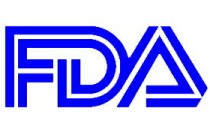The FDA is researching new ways to identify pathogens in food more quickly. A team at the FDA’s San Juan Laboratory has received seed funding through a Health and Human Services HHSignite award to “adapt traditional chemistry methods for the detection of foodborne pathogens.”
 The research is focusing on Capillary Electrophoresis coupled with a Mass Spectrometer, called CE-MS, that will identify pathogens through specific proteins by fragmentation pathogens. This will identify foot prints for pathogenic bacteria such as E. coli, Salmonella, Listeria, and Staphylococcus. Researchers hope this will help create faster screening methods so investigators can identify bacteria in an outbreak much more quickly.
The research is focusing on Capillary Electrophoresis coupled with a Mass Spectrometer, called CE-MS, that will identify pathogens through specific proteins by fragmentation pathogens. This will identify foot prints for pathogenic bacteria such as E. coli, Salmonella, Listeria, and Staphylococcus. Researchers hope this will help create faster screening methods so investigators can identify bacteria in an outbreak much more quickly.
CE-MS is also used as a way to discover biomarkers for diseases from tissues and body fluids. A screening step first helps identify the bacteria, then confirmation follows once the bacteria has been identified. When bacteria in an outbreak is identified quickly, investigators can then look for the source using traceability and inform the public about the risk, hopefully reducing the total outbreak numbers.




